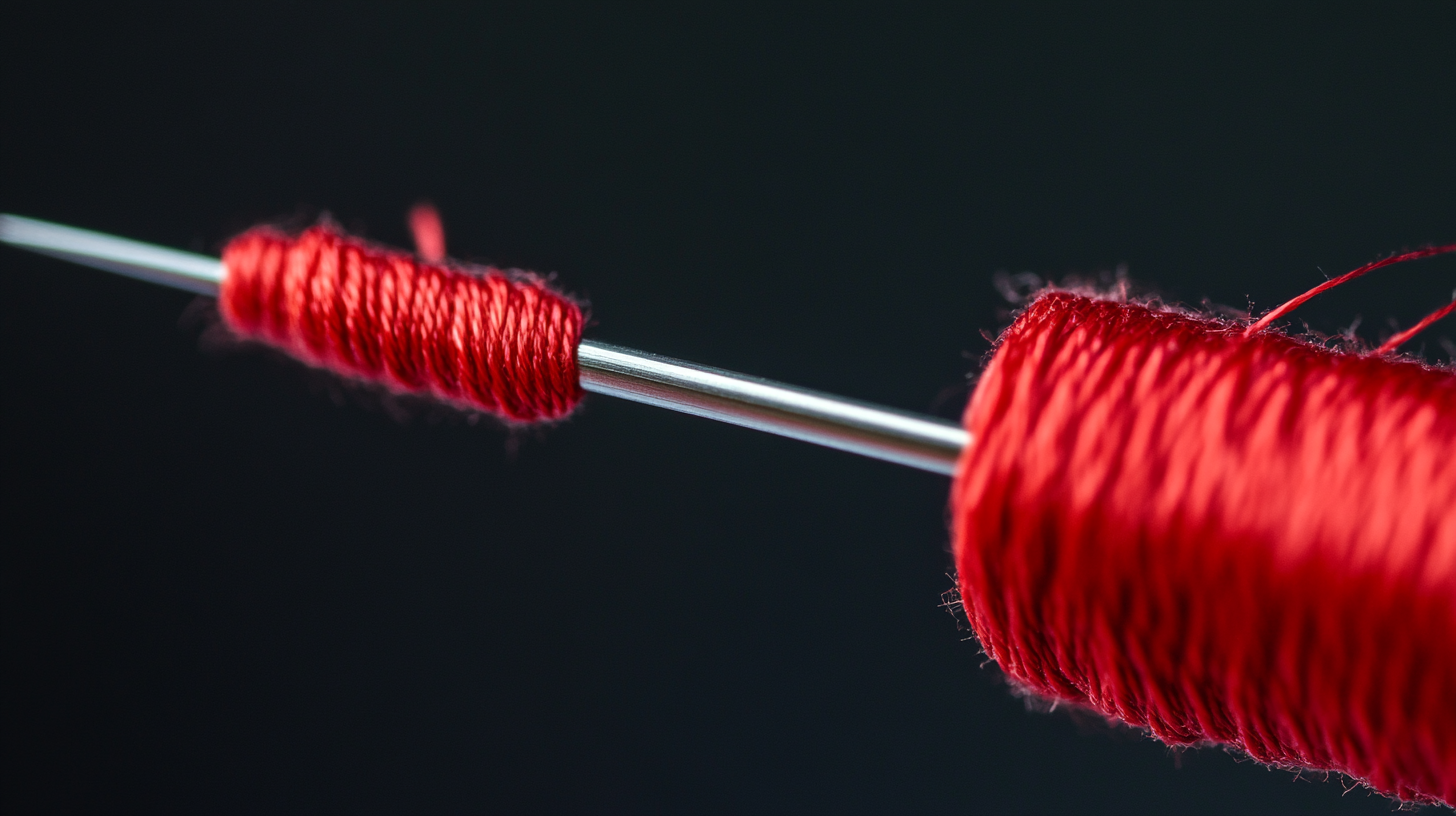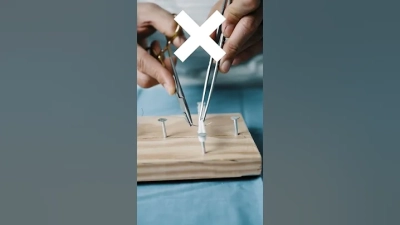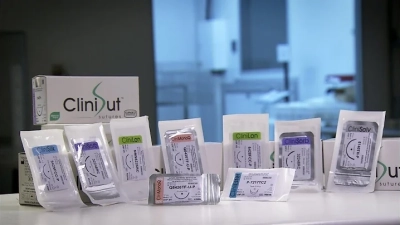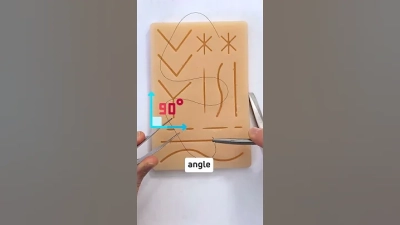- Home
- Products
- Services
- Product concept development
- Engineering
- Design for manufacturability
- Regulatory services
Read more - Material selection and formulation
- Prototyping
- Testing and validation
Read more - Production process development
- Custom tooling
- Manufacturing
- Finishing operations
- Assembly
- Packaging
- Private labeling
- Sterilization
Read more
- Resources
- Careers
- Search
5 Essential Factors That Make Medical Sutures a Global Sourcing Priority
In the ever-evolving landscape of healthcare, the importance of high-quality medical supplies cannot be overstated. Among these, medical sutures play a critical role in surgical procedures, wound closure, and overall patient recovery. As globalization continues to shape the medical supply chain, understanding the essential factors that drive sourcing decisions for medical sutures becomes imperative. Not only do these factors influence the availability and cost of sutures, but they also significantly impact patient outcomes and safety.
This blog delves into the five essential factors that make medical sutures a global sourcing priority. From technological advancements and materials innovation to regulatory compliance and market demand, each aspect plays a pivotal role in ensuring that healthcare providers have reliable access to the best suturing options available. By navigating these factors, stakeholders in the medical community can enhance their sourcing strategies, ultimately leading to improved surgical practices and patient care worldwide.

The Increasing Demand for Medical Sutures in Global Healthcare Markets
The demand for medical sutures has steadily increased in global healthcare markets, driven by several factors including the rise in surgical procedures and advancements in wound management technologies. According to a report by Grand View Research, the global surgical suture market was valued at approximately $4.9 billion in 2020 and is expected to expand at a compound annual growth rate (CAGR) of 6.3% from 2021 to 2028. This growth is heavily influenced by the aging population, which tends to require more surgical interventions.
Moreover, the ongoing COVID-19 pandemic has placed a strain on healthcare systems worldwide, further escalating the need for safe and effective suturing solutions. As hospitals adapt to a higher volume of elective surgeries postponed during the pandemic, the globe is witnessing unprecedented demand for various suture types, including absorbable and non-absorbable sutures. A report by Fortune Business Insights estimates that by 2028, the absorbable sutures segment alone could account for more than 50% of the total market share, reflecting a shift in preferences towards sutures that minimize the need for removal and reduce patient discomfort.
Additionally, the increased focus on minimally invasive surgical procedures has led to innovations in suture technology. The introduction of advanced materials and techniques, such as barbed sutures and those with antimicrobial properties, is meeting the growing expectations of healthcare providers globally. With the trends showing no signs of slowing down, the necessity for efficient global sourcing of medical sutures has become more apparent, prompting manufacturers to adapt their strategies to align with market demand and ensure timely delivery to healthcare facilities.
Global Demand for Medical Sutures
This pie chart represents the distribution of demand for medical sutures across various types of healthcare procedures, highlighting the significant role of surgical procedures in the global market.
Key Factors Driving the Growth of the Medical Sutures Industry
The medical sutures industry is witnessing notable growth, influenced by several critical factors that are reshaping its landscape. One of the primary drivers is the increasing demand for advanced wound care solutions and surgical procedures. As healthcare facilities upgrade their technology and patient care standards, the need for high-quality sutures, especially those with antibacterial properties, has surged. This trend highlights a significant shift in market dynamics, as companies are now focusing on producing innovative sutures that cater to safety and efficiency.
Moreover, the emergence of knotless suturing systems is revolutionizing surgical practices. These systems eliminate the need for traditional knot tying, reducing the procedure time and complications associated with knots. As a result, the adoption of devices such as barbed sutures is becoming prevalent in various surgical fields, emphasizing the importance of innovation in driving market growth. The growth of minimally invasive surgery is further pushing the demand for specialized sutures that suit modern surgical techniques.
Additionally, the rise of the healthcare CRM market, with an expected CAGR of 11.6% from 2024 to 2032, underscores the heightened focus on patient engagement and satisfaction, which directly impacts the choices made in surgical environments. The strategic shift towards enhanced patient experiences is prompting hospitals and clinics to invest in high-quality medical sutures to ensure better surgical outcomes. As the global medical sutures market evolves, these factors undoubtedly position it as a priority for sourcing and development worldwide.
5 Essential Factors That Make Medical Sutures a Global Sourcing Priority
| Factor | Description | Impact on Industry | Growth Drivers |
|---|---|---|---|
| Quality Standards | Adherence to stringent regulatory and quality standards ensures safety and efficacy. | High quality standards lead to increased demand and trust in products. | Regulatory compliance, quality certifications. |
| Technological Innovations | Advanced materials and techniques improve suture performance and outcomes. | Increased adoption of new technologies fosters market expansion. | Research and development, investment in new materials. |
| Market Demand | Rising surgical procedures and a growing patient population drive demand for sutures. | Sustained growth of the surgical market boosts suture consumption. | Increasing healthcare access, demographic changes. |
| Cost-Effectiveness | Affordable sutures ensure accessibility for various healthcare systems. | Cost-effective solutions attract more clients and markets. | Economic healthcare models, bulk purchasing. |
| Supply Chain Efficiency | Streamlined logistics and distribution enhance product availability. | Improved supply chain operations result in consistent product supply. | Global sourcing strategies, technology in supply chain management. |
Comparative Analysis of Biodegradable vs Non-Biodegradable Sutures
The choice between biodegradable and non-biodegradable sutures is pivotal in surgical practices, impacting not only patient outcomes but also the overall efficiency of healthcare systems. Biodegradable sutures, often made from materials like polyglycolic acid or polylactic acid, are designed to naturally break down in the body over time. This characteristic minimizes the need for suture removal in many cases, which can significantly reduce patient discomfort and the risk of infection associated with secondary procedures. Additionally, these sutures gradually lose tensile strength, allowing the tissue to heal and regain structural integrity without the added burden of permanent foreign materials.
On the other hand, non-biodegradable sutures, typically made from materials such as silk or nylon, remain intact within the body unless physically removed. While these sutures offer excellent durability and are often preferred in situations requiring long-term support, they come with their own set of complications. The presence of non-biodegradable materials can lead to chronic inflammatory responses or infection, particularly if the sutures become exposed or if the incision does not heal properly. Furthermore, the necessity of a follow-up procedure to remove these sutures can strain healthcare resources and patient schedules.
In summary, the ongoing debate between biodegradable and non-biodegradable sutures highlights the need for careful consideration in the selection process. Factors such as the nature of the surgical procedure, anticipated healing times, and patient-specific variables must all be taken into account. Ultimately, the choice can greatly influence not only individual patient care but also broader medical practices in terms of efficiency and cost-effectiveness.

Technological Innovations Shaping the Future of Suture Production
The landscape of suture production is undergoing a remarkable transformation driven by technological innovations. Advances in bio-inspired adhesive technologies are paving the way for new classes of medical adhesives, mimicking the natural adhesion seen in gecko setae and mussel proteins. These innovations promise enhanced performance for surgical sutures, leading to increased effectiveness in wound closure and healing processes.
Cellulose-based materials are emerging as a significant focus in the development of surgical sutures, backed by a recent review in the Journal of Bioresources and Bioproducts. This research highlights the potential of cellulose not only as a biocompatible material but also as a sustainable alternative to traditional sutures. The ability to fabricate sutures from renewable sources aligns with the growing demand for environmentally friendly medical products.
Additionally, the introduction of "smart" sutures has captured attention in the medical community. These sutures are embedded with drug delivery systems, potentially revolutionizing post-operative care by aiding recovery for conditions like Crohn's disease. The seamless integration of technology into medical devices not only enhances patient outcomes but also reflects a larger trend towards bionic advancements in surgical procedures.
As the industry moves toward more sustainable and innovative solutions, the focus on digital technologies, such as digital twin and extended reality applications, is critical. These technologies hold promise for improving the efficiency and safety of medical device production while enabling a deeper understanding of material interactions in healthcare settings. The future of suture production is undeniably influenced by these technological advances, making it a key area of global sourcing and development.

Regulatory Standards Impacting Global Suture Sourcing Strategies
When considering the global sourcing of medical sutures, understanding the regulatory standards that shape sourcing strategies is crucial. Regulatory frameworks vary significantly across countries and regions, creating a complex landscape for manufacturers and suppliers. These standards dictate not only the materials and designs approved for use but also the quality control processes that must be adhered to. For companies looking to source sutures globally, compliance with these regulations is essential to ensure product safety and efficacy.
Countries often impose specific requirements on medical devices, including sutures, based on their healthcare and regulatory environments. For example, the U.S. Food and Drug Administration (FDA) has stringent guidelines that manufacturers must follow, which might differ from those outlined by European or Asian authorities. This variation can influence sourcing decisions, as companies must evaluate their supply chains to ensure that their products meet the requisite standards in all target markets.
Moreover, the impact of international trade policies cannot be overlooked. Recent debates and investigations surrounding national security and imports, as highlighted in various public hearings, can significantly affect the availability and cost of materials used in medical sutures. Firms must be proactive in understanding these political and economic dynamics, ensuring that their sourcing strategies remain agile and compliant while meeting global demands for quality healthcare solutions.
5 Essential Factors That Make Medical Sutures a Global Sourcing Priority
The chart below illustrates the five key factors influencing global sourcing strategies for medical sutures, highlighting the importance of regulatory standards.









